If you want to get the most out of your blueberry bushes, you must prune them, but many people don't. Pruning can be a bit of a tricky subject for growers. Some plants need pruning hard, others barely at all, leading to many not bothering.
But with blueberries, you really should, or else your harvest will dwindle year by year. And, what's more, it's not even tough! So follow my guide and prune your blueberry bushes for increased harvests year after year!
When To Prune Blueberries
As with many bushes and trees blueberries should be pruned in the winter or early spring while they are still dormant.
so aim for any time from November to March to prune your blueberries.
How To Prune Blueberries
Now let's get into the meat and potatoes of blueberry pruning, what & how should you prune your prized bushes.
The first thing to look at is old v new growth on your plants. Blueberries mainly fruit on one-year-old branches (those that grew last year). Older branches are easily identifiable as they are usually larger and have more of a bark on them, whereas the young branches are smooth and usually brighter coloured.
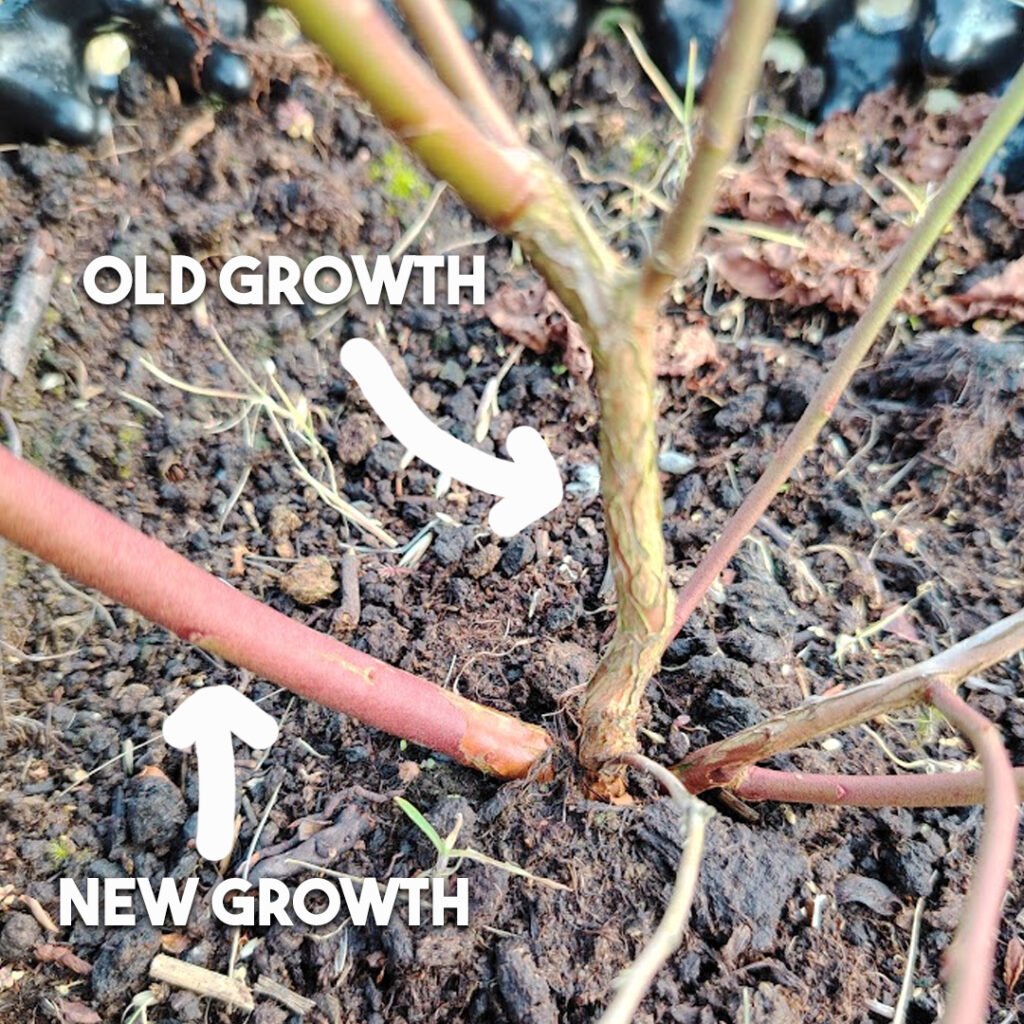
When pruning your plants it is this older growth that we ideally want to remove, if you can then remove these right at the base and your plant will throw up new shoots. I say if you can because these older branches may also have many younger branches on them so you might want to wait another year before removing them.
Next, you want to look at the buds on your branches, do all of these observations before making a single cut!
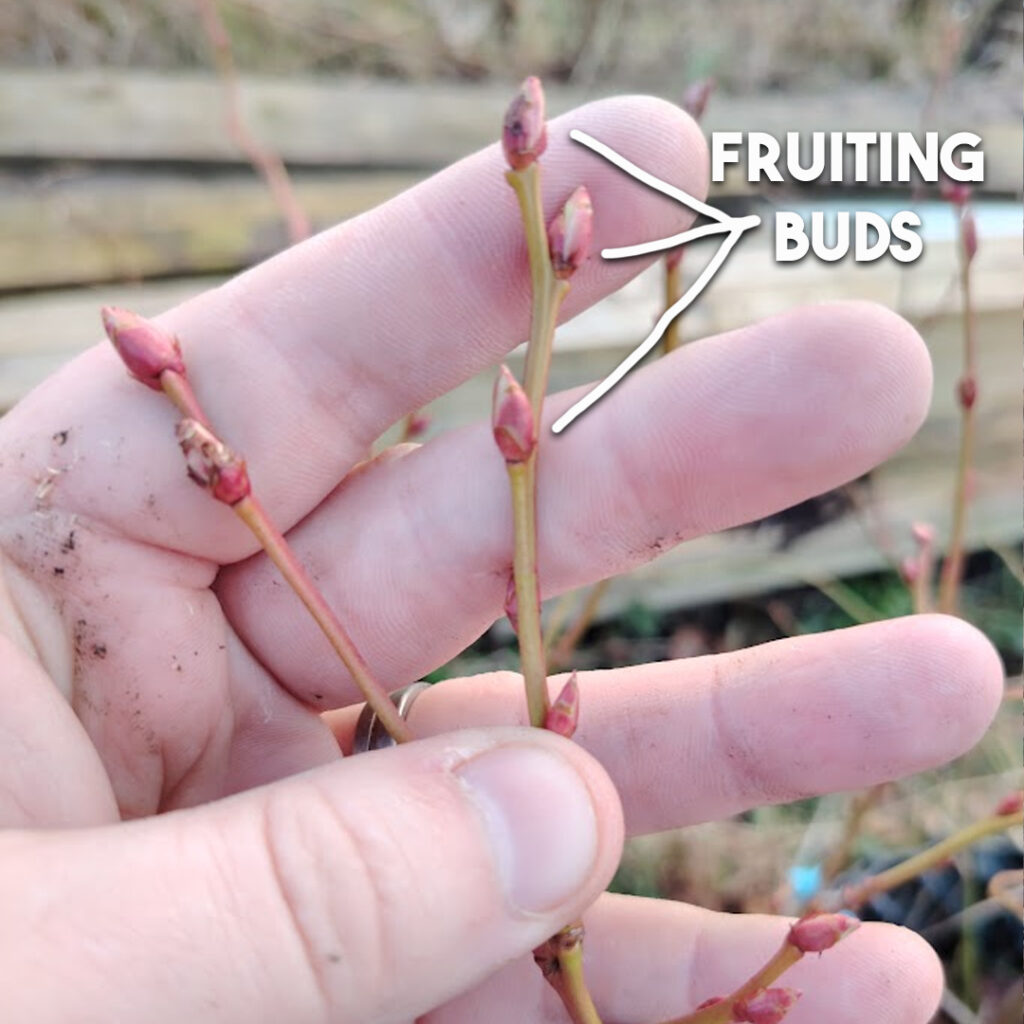
You can tell the difference between fruiting buds and leaf buds just by looking at them. The big fat juicy buds are where this year's fruit will be produced - so try and avoid removing them if possible.
these smaller - skinnier buds are the leaf buds, no fruit will be produced here.
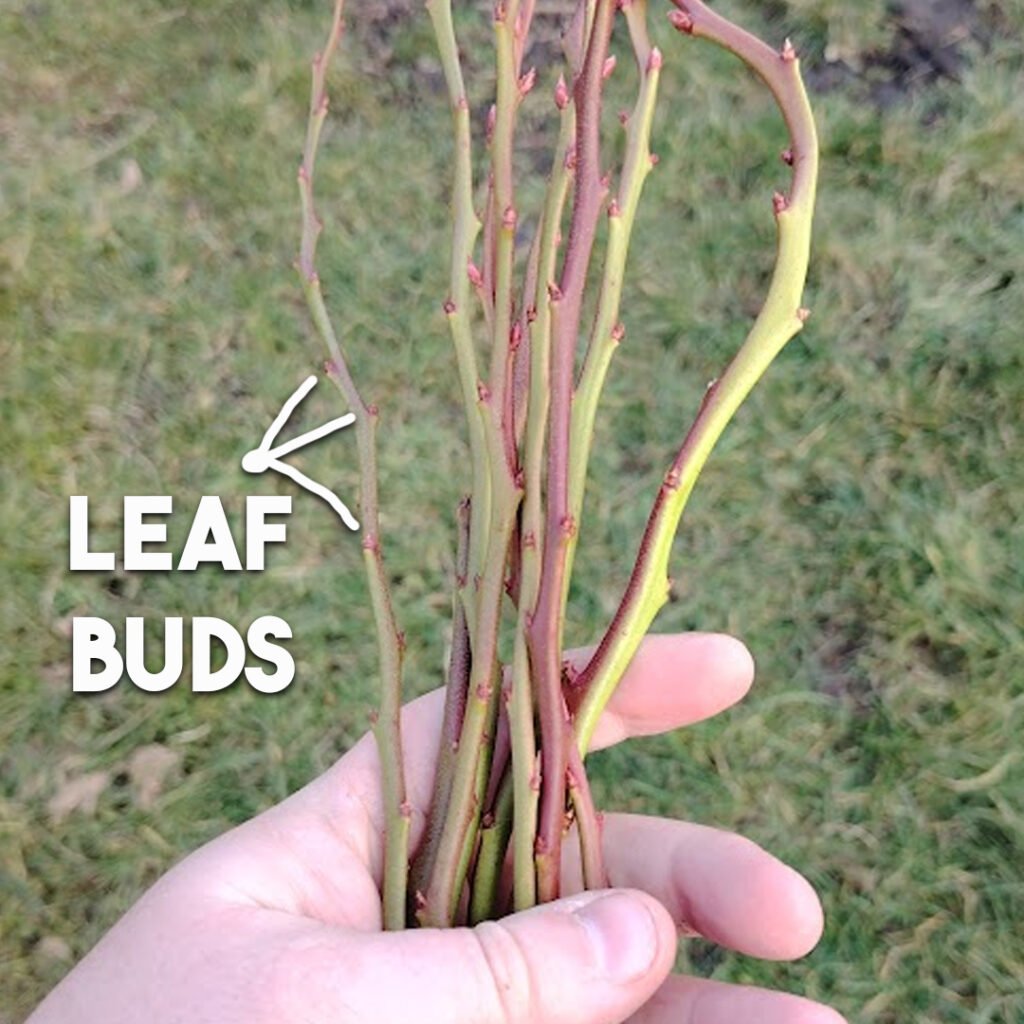
How Much To Remove
On older, established plants, you can remove up to half of the total branches when pruning.
On younger (up to three years old) bushes then don't remove more than a third of the branches.
Always start with the oldest branches first, also remove any diseased branches or crossing branches. Once these have been removed you can look at removing younger branches if necessary.
Sometimes one branch will grow abnormally wrong or grow at a strange angle, feel free to remove these if they are getting in the way, even if they are young branches.
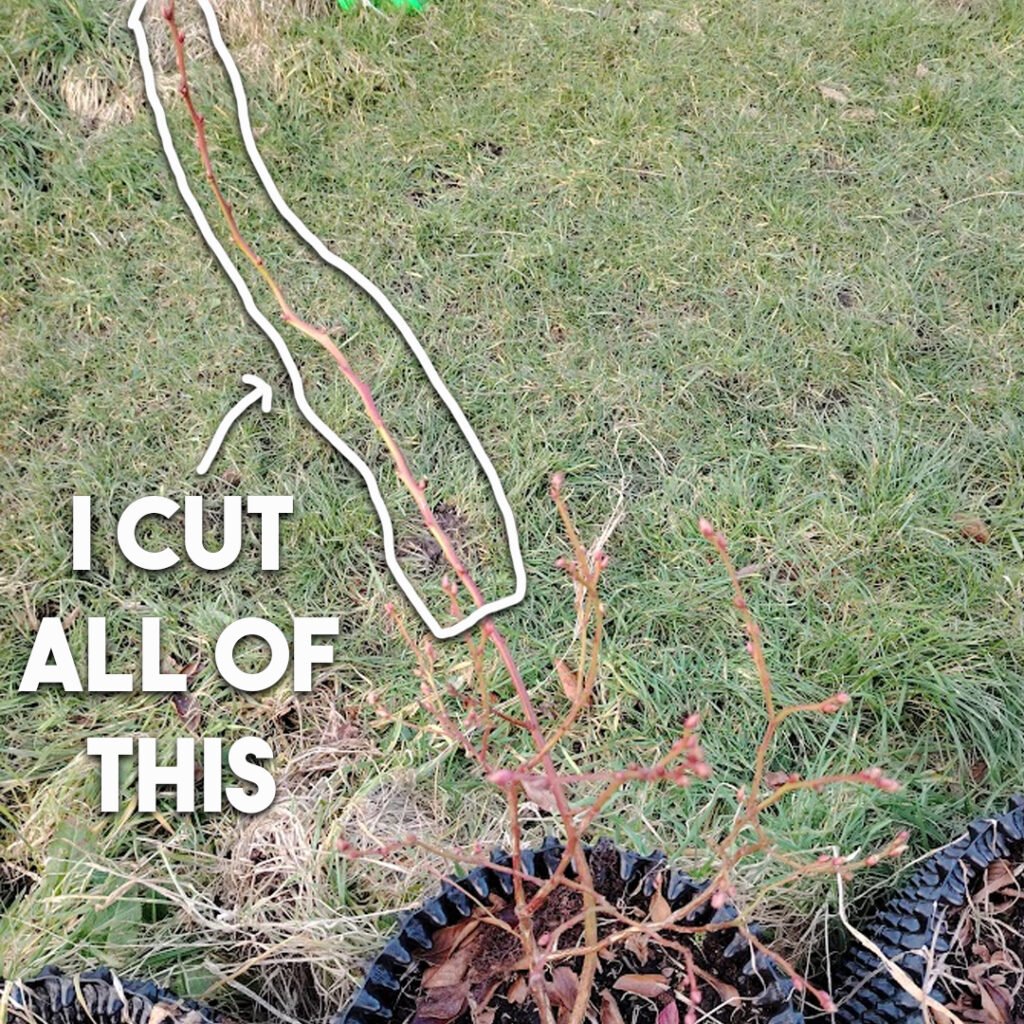
You can see this young blueberry bush through out one huge branch which sticks way out into the path at my allotment. I trimmed this down to be more level with the rest of the branches on the plant.
This young wood is perfect for rooting and turning into brand-new plants - more on that below!
You can also remove branches to help keep the shape of your plant, but be careful not to overdo this. The fruiting buds are always at the tip of your stems so if you prune all of your branches back to achieve the perfect shape then you can end up with little fruit.
Overgrown Blueberries
If your blueberry has gotten away from you or you have inherited an overgrown bush then worry not, you can still tame it. The downside will be this will be an extensive chop, so don't expect lots of fruit for the next year or two!
Remove the oldest canes first, right down to the base of the plant. Remove over half of the branches this way - completely removing them.
Then trim the leftover branches by at least half - don't worry about leaving fruiting buds on the plant. Like I said this will be a painful cut but your plant will be much healthier for it in the future.
This heavy pruning will promote the growth of lots of new stems from the base of the plant. Prune these as instructed above next year.
Rooting Blueberry Cuttings
Once you have pruned your blueberries you will be left with lots of cuttings, the good news is you can turn these cuttings into brand-new plants for more blueberries!
The first step is to use young branches for these cuttings, younger branches root much better than older ones. Young branches will be brightly coloured and free from any "bark".
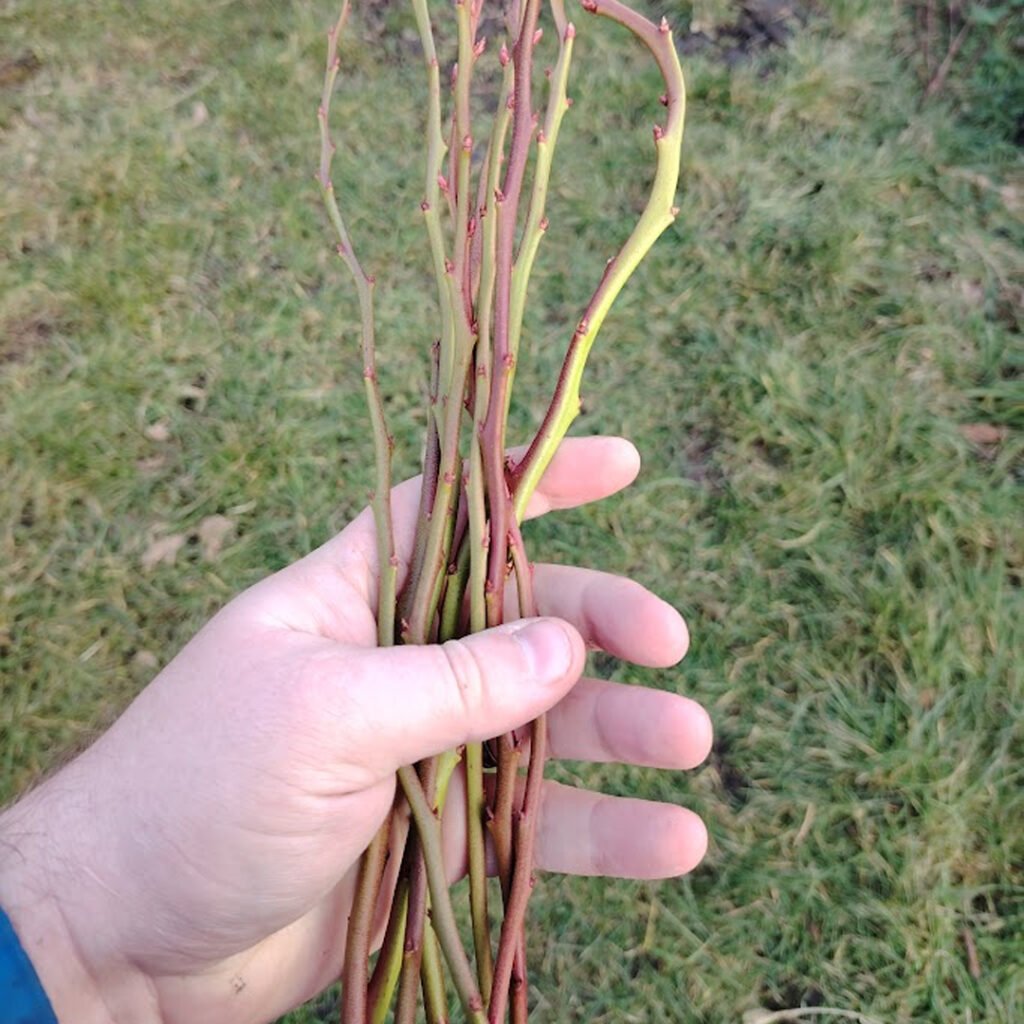
These are the younger branches I took of my blueberries when pruning them this winter. This will make the perfect branches for cuttings!
One thing you may have been thinking is these look a little too long to turn into cuttings. Well yes, you are right, but we can cut these down into multiple cuttings. Your cutting doesn't have to have an intact tip to grow and turn into a blueberry bush.
Turn each long stick into as many 5 - 6" sticks as possible.
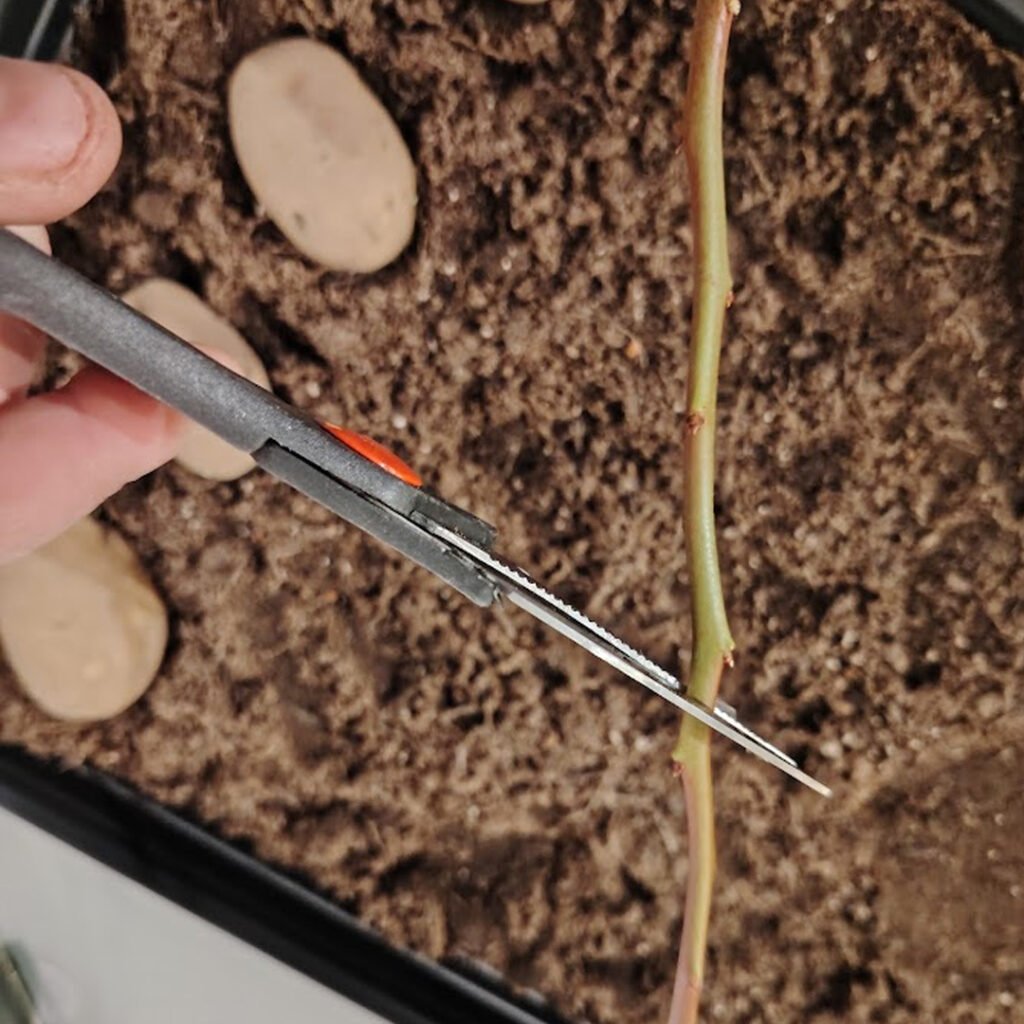
Now we want to prepare our soil for cuttings. With cuttings nutrition isn't too important, what is important is drainage.
If you have some then seed & cutting compost is obviously perfect. If you don't have any then you can use regular compost - just add some ingredients to improve drainage.
These additions could be sand, small stones, or perlite. Just add whatever you have on hand to help improve the drainage of your mix.
I like to use small pots for my cuttings and add multiple cuttings to each pot. As with all cuttings not all of them will make it - so potting each up individually can be a waste of time.
When your soil is ready then you want to prepare your cuttings before dipping your cuttings in some rooting hormone powder.
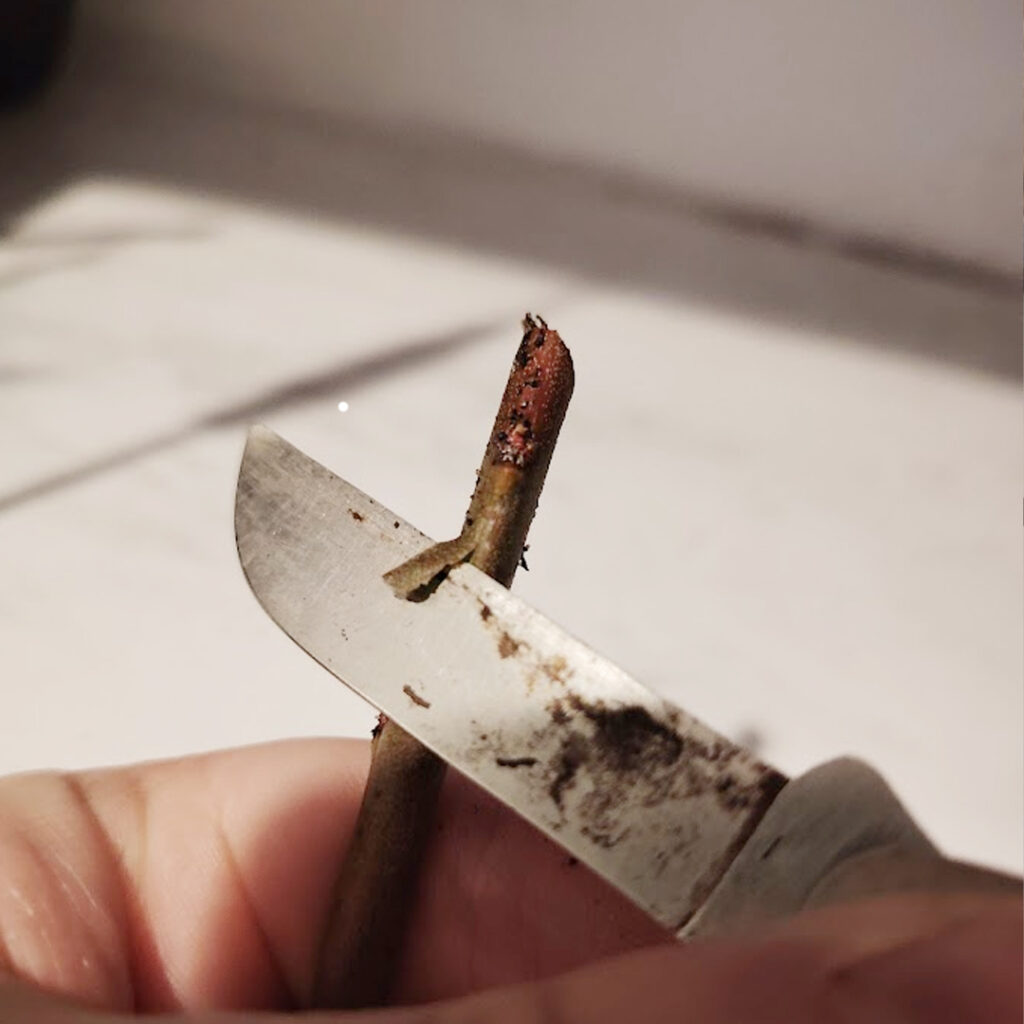
Prepare the cutting by peeling off the bark at the bottom of the cutting. You want to use clean sterilized tools for this ideally. You can see I didn't do that but do as I say not as I do! 😂
Peeling the bark back just gives more area for the rooting hormone to cling to, increasing your chances of success.
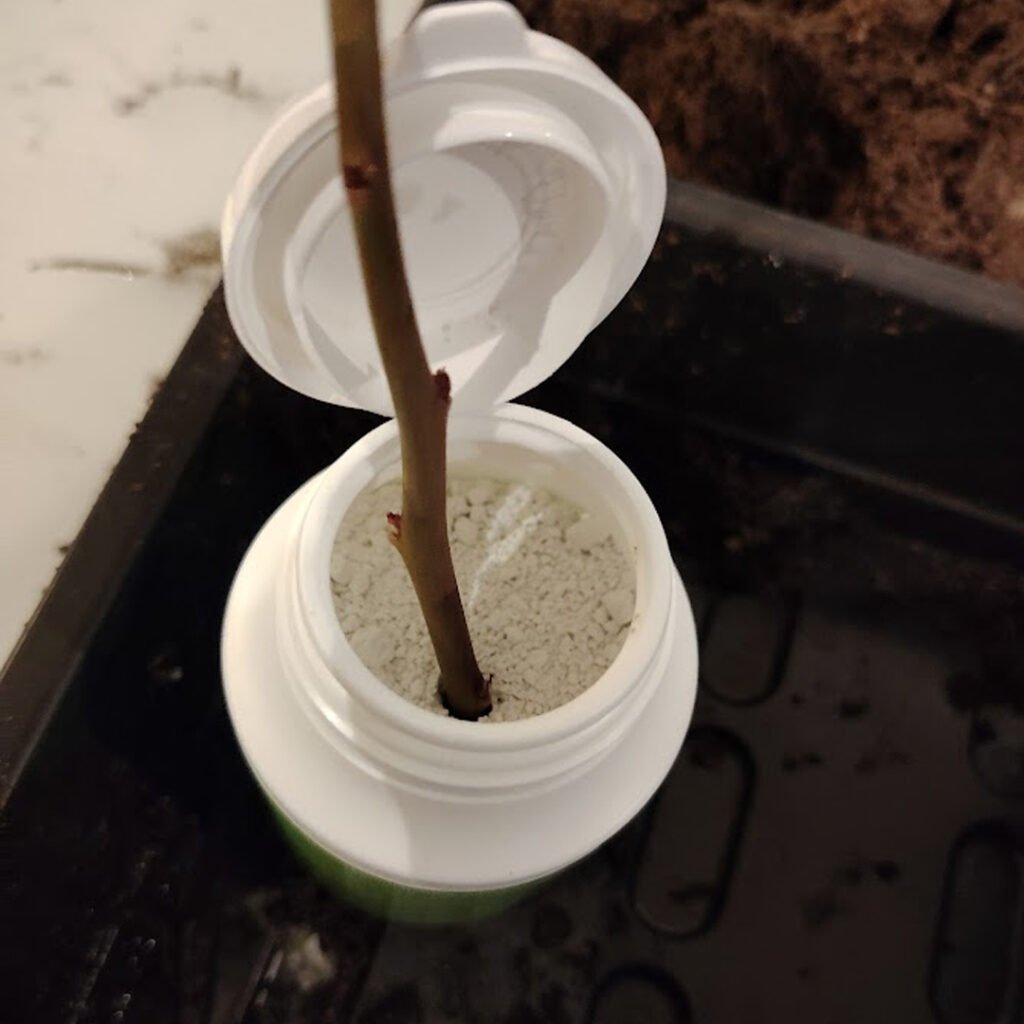
This just helps stimulate the growth of roots from your cutting and gives them the best possible chance of establishing themselves.
Now poke those sticks into your soil and that's it!
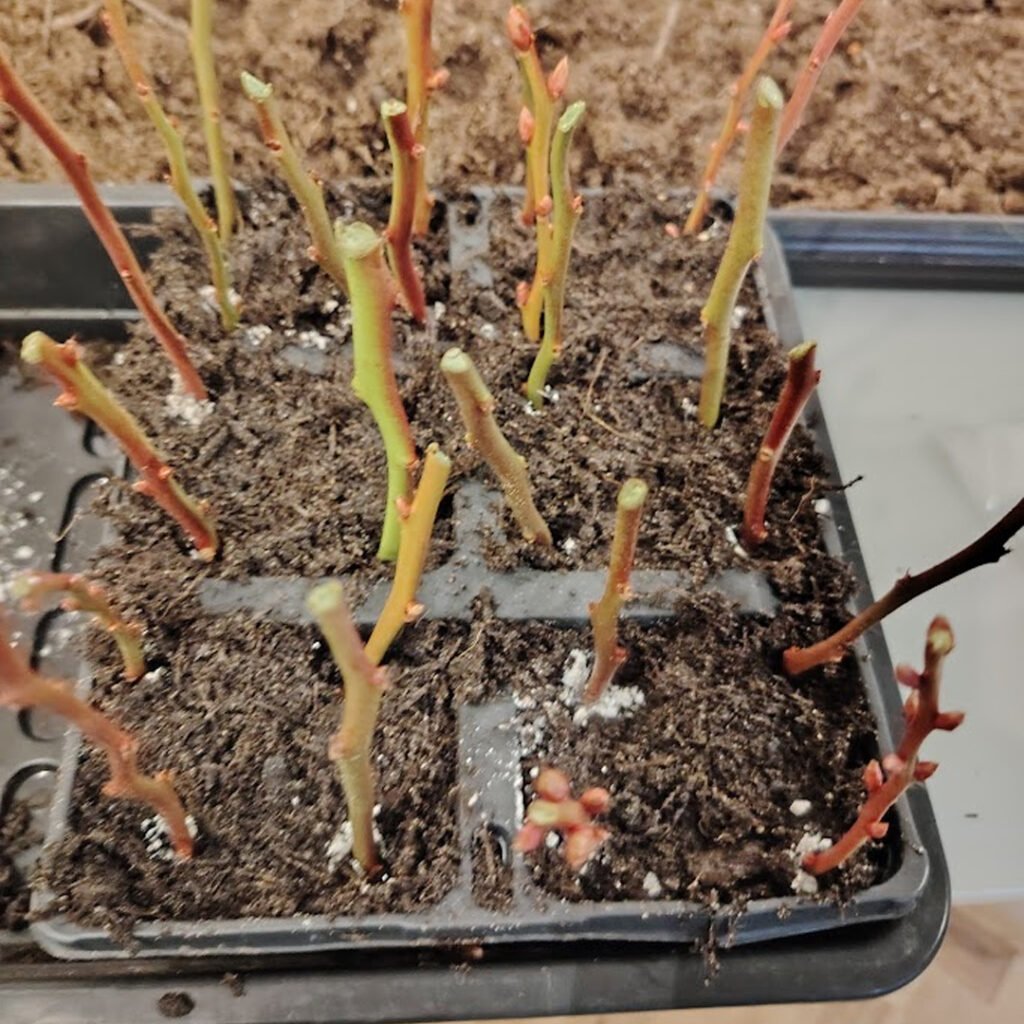
Now you want to place these cuttings indoors or in a heated greenhouse to give them the best chance of success. I like to put them on a windowsill - any will do even if they are not in direct sunlight.
The next step is always the hardest - waiting. You will know if you cutting is successful if leaves begin to appear and the cutting roots. You can see if it is rooted with a simple tug test. Very gently pull on the cutting and see if there is any resistance to you pulling it out. If you feel resistance then it has rooted!
Always keep your cuttings moist, don't let them dry out!
Once rooted you want to pot each successful cutting on into its own pot with some ericaceous compost. You want to keep them in pots and protected for at least 6 months but I often keep mine in the greenhouse for their first year.

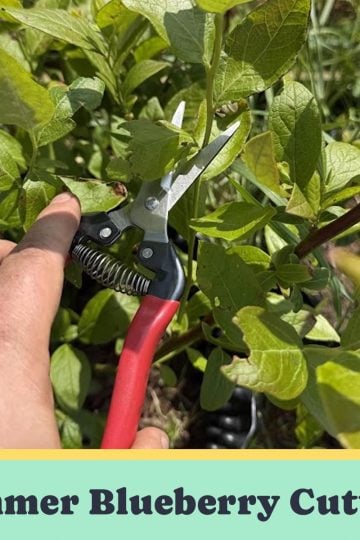

Philip says
Sounds usefully just weight for results
Gill Hirst says
What a clear, no nonsense explaination. Thank you
Sarah says
This was berry helpful!!! I myself have 8 bushes. We’re looking to add more and try a different variety. I learned much from your post. I’m here in lower AL. We have a hill our bushes just thrive so beautifully!!! Our bushes produce several gallons of berries every year!